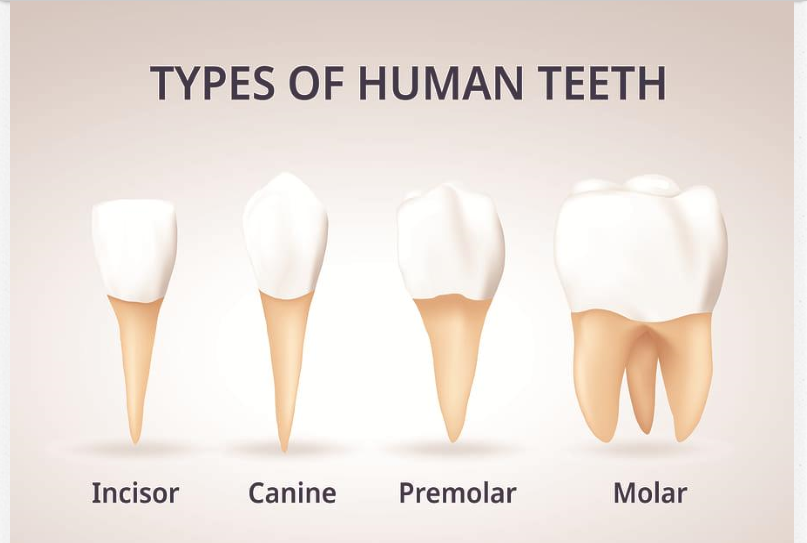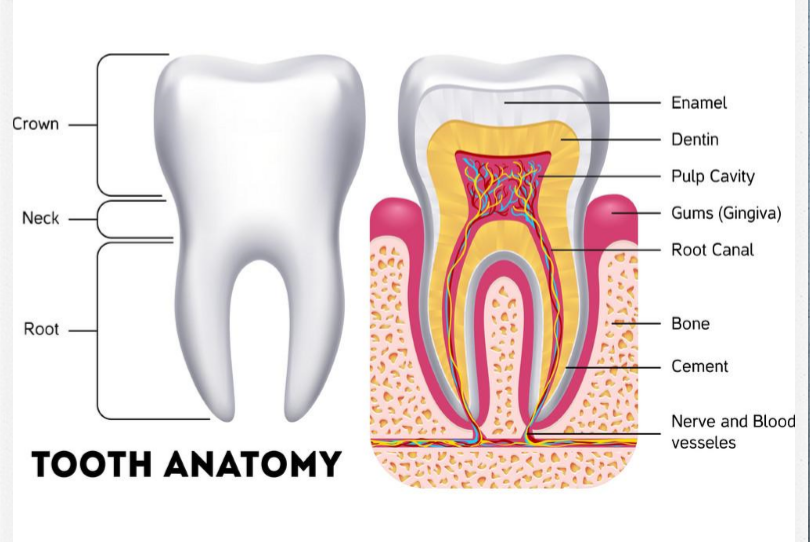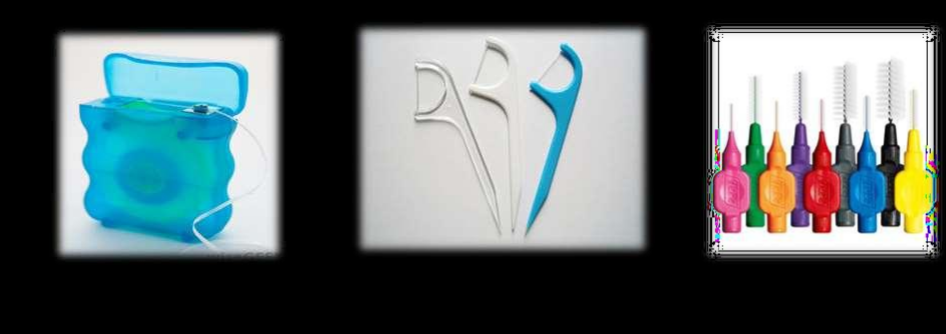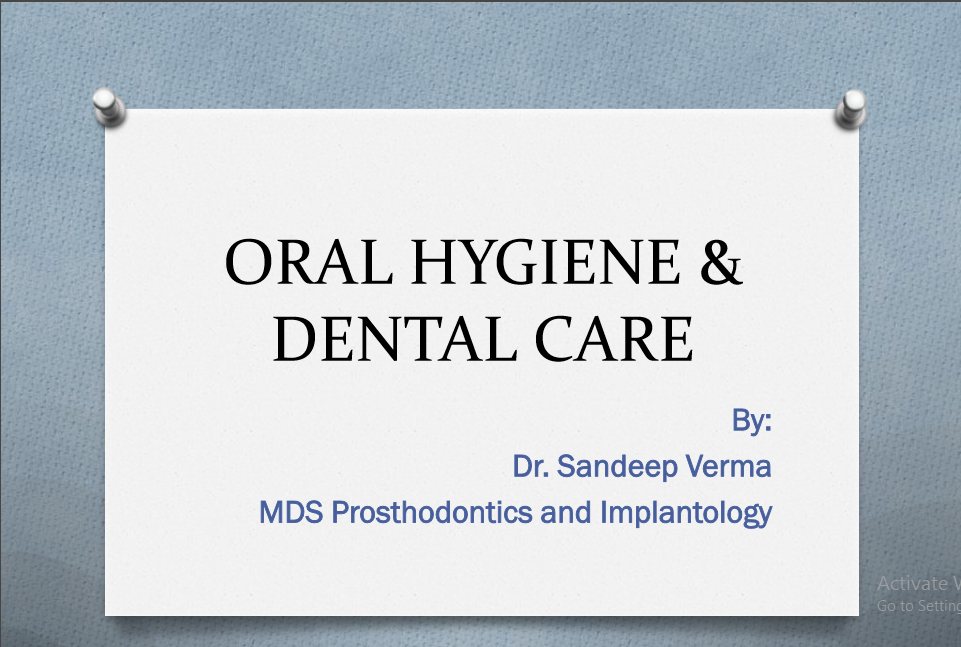Oral Hygiene & Dental Care
- General Dental Awareness
- Structure of teeth
- Oral Hygiene Maintenance
- Importance of good oral hygiene
- By maintaining good oral hygiene we can prevent
- Basic steps for maintaining oral hygiene:
- Brushing:
- Proper brushing method
- Interdental Cleaning Aids
- Dental Floss
- Interdental Brush (Proxy Brush)
- Read & Download the full copy in pdf:
General Dental Awareness

Structure of teeth
- Enamel (topmost layer)
-The hard material on the outer surface of the tooth.
- Dentin (middle layer)
-Below the enamel – the bonelike material that surrounds the sensitive inner parts of the tooth.
- Pulp (innermost layer)
-Tissue that contains nerve endings and blood vessels.

Oral Hygiene Maintenance
Oral hygiene includes all the processes for keeping the mouth clean and healthy. Good oral hygiene is necessary for the prevention of dental caries, periodontal diseases, bad breath, and other dental problems.
Importance of good oral hygiene
Prevention is always better than cure. Good oral hygiene habits will keep away most of the dental problems saving you from toothaches and costly dental treatments.
By maintaining good oral hygiene we can prevent
- Dental caries
- Gingivitis
- Periodontitis (Pyorrhoea)
- Halitosis (Bad Breath)
Basic steps for maintaining oral hygiene:
- Brushing your teeth (at least twice a day or after every meal)
- Floss your teeth regularly
- Proper diet
- Other interdental cleanings (Interdental brushes)
- Rinsing with Mouthwashes
- Regular dental checkups
Brushing:
- Always use a soft-bristled toothbrush
- Use anti-cavity Fluoride toothpaste
- Hold the toothbrush at a 45-degree angle at the gum line, brushing in a circular motion. This sweeps plaque out of the gingival pocket
- Brush teeth for a minimum of two minutes at least twice a day.
- Brush gums and tongue along with your teeth.
- Don’t brush too hard because this can cause gingival (gum) recession.
Proper brushing method
- For thorough but gentle cleansing, use a soft toothbrush
2. Hold your brush at a 45° angle. Begin by brushing the outside of the front teeth. Use a gentle back-and-forth motion.
3. Next, brush the outside back teeth, starting along the gumline.
4. Inside back teeth. Use short, angled brush strokes.
5. Inside front teeth. Tilt the brush vertically; use an up-and-down motion.
6. Chewing surfaces. Hold the brush flat. Use a gentle scrubbing motion.
Interdental Cleaning Aids
Many tools are available for interproximal cleaning.

Dental Floss
- Dental floss is the most widely recommended tool for removing plaque from proximal tooth surfaces.
- Floss is available as a multifilament nylon yarn that is twisted or nontwisted, bonded or nonbonded, waxed or unwaxed, and thick or thin.
Dental floss should be held securely in the fingers or tied in a loop. (12-18 “)
Dental floss technique. The floss is slipped between the contact area of the teeth, is wrapped around the proximal surface, and removes plaque by using several up-and-down strokes.
Interdental Brush (Proxy Brush)
- Interdental brushes are conical shape brushes made of bristles mounted on a handle / single tufted brushes.
- Suitable for cleaning large, irregular, or concave tooth surfaces adjacent to wide interdental spaces.
- Inserted inter-proximally and are activated with short back and forth strokes in between the teeth.
Read & Download the full copy in pdf:
If you already have a premium membership, Sign In.
 Dr. Sandeep Verma
Dr. Sandeep Verma
Dr. Sandeep, MDS Prosthodontics, is a post graduate of SRCDSR, Faridabad where he also attended his undergraduate studies. He has more than 10 years of clinical experience to share. Additionally, he is member of Indian prosthodontic society and hopes to continue his skills in order to further the field of prosthodontics, helping to improve patient outcomes and encourage next generation of prosthodontists.












